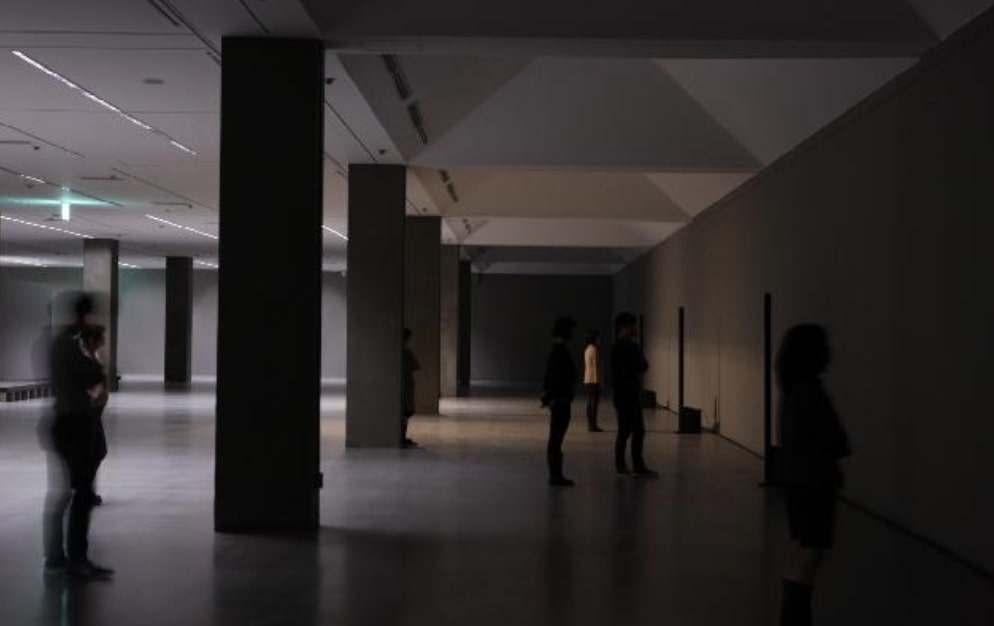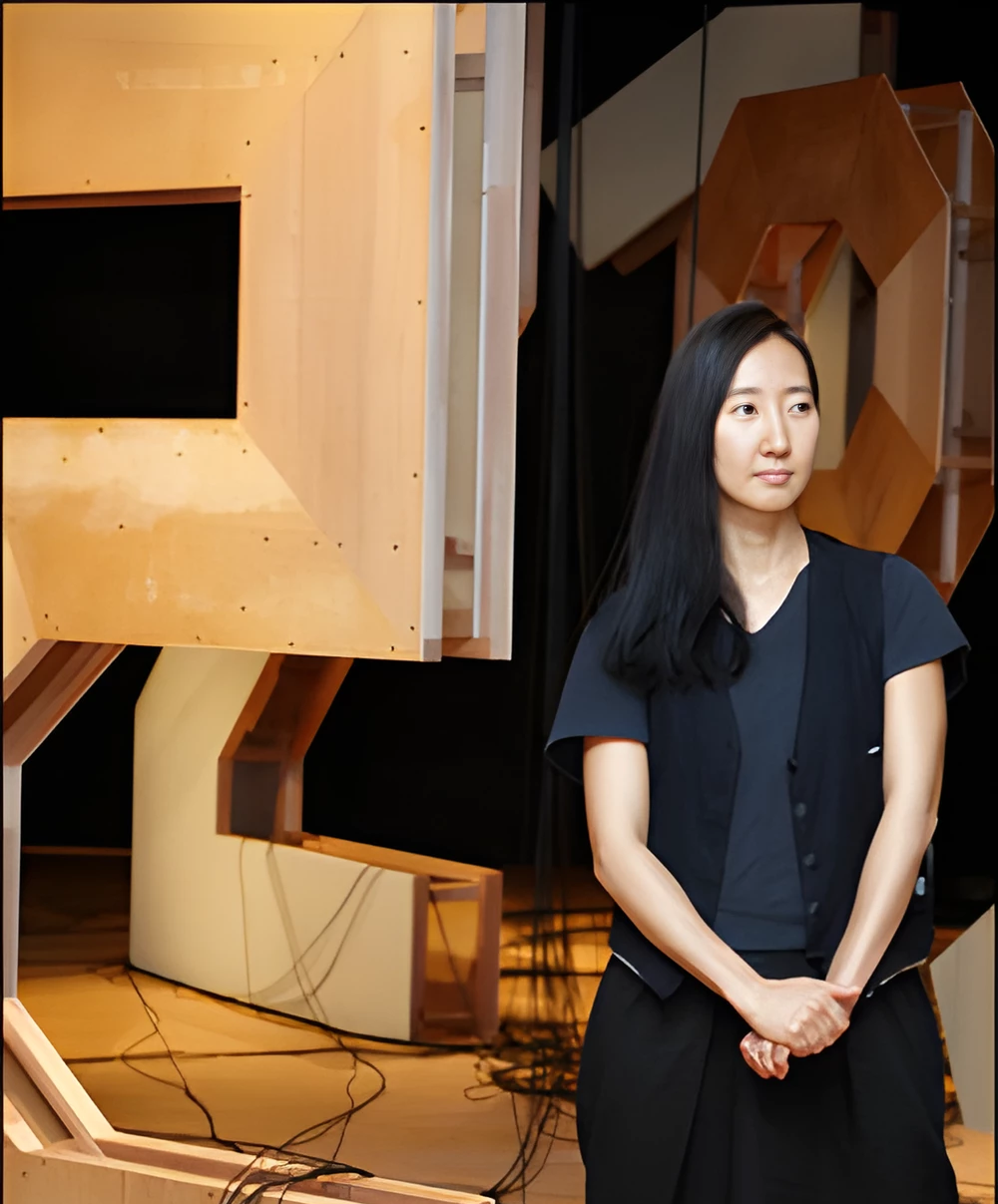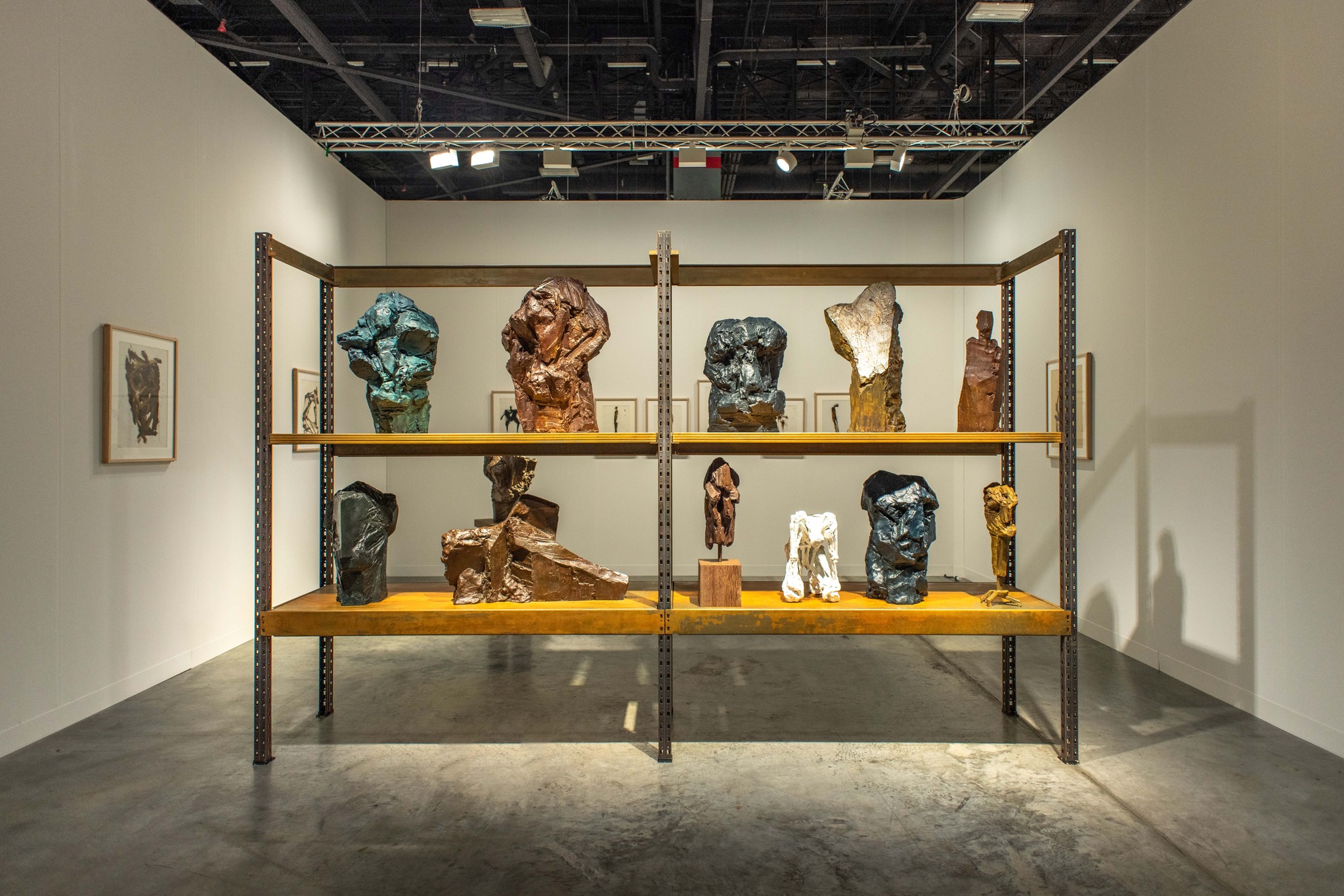Sora Kim (1965~) is one of the representative Korean conceptual artists who has been making forays into open interpretations of humans and surroundings through video, sound, installation and performance based on entering into a relationship and the process of communication. Her work explores new possibilities of artistic experience and interaction by actively incorporating collaboration with various artists from different genres or audience participation in the production or exhibition process.

Sora Kim, Longest saddest song on the earth, 2006 ©Busan Biennale
Since the mid-1990s, the artist, who
has been actively engaged both domestically and internationally, has explored
the potential of artistic practice to intervene at the point of conflict
between the human conditions of social life and the system of exchange value.
For the artist, the act of exhibition is a temporary performance that activates
an alternative mechanism for social relationships, and the exhibited outcome
becomes a kind of "social sculpture."
Sora Kim, who participated in the 2006
Busan Biennale, presented a performance piece titled Longest saddest
song on the earth, which approached issues of translation,
adaptation, and cultural hybridity stemming from the global spread of popular
culture, based on her personal experiences. Longest saddest song on
the earth is a progressive performance where, during the exhibition
period, a composer created a song based on an epic poem the artist had written
about the sea, and different boys and girls each took turns singing a part of
the song once a day.
Through this, the artist experimented
with transforming her poem into music through collaboration with a composer and
using it as a universal language of communication, continuously forming new,
alternative relationships with the audience.

Installation view of “Hansel & Gretel” at Kukje Gallery in 2007 ©Kukje Gallery
In 2007, Kim held her first solo exhibition in Korea, titled "Hansel & Gretel," at Kukje Gallery. In this exhibition, the artist reinterpreted the fairy tale Hansel and Gretel based on her perspective of the world we live in, showcasing installation works. By restructuring the exhibition space into three distinct zones where reality and fantasy intersect, the artist encouraged the audience to navigate the boundary between the two, much like Hansel and Gretel.
 Installation view
of “Hansel & Gretel” at Kukje Gallery in 2007 ©Kukje Gallery
Installation view
of “Hansel & Gretel” at Kukje Gallery in 2007 ©Kukje GalleryThe first space featured paintings composed
of new sentences created by selecting words from various books, accompanied by
the intermittent flashing of red lights and a rearranged commercial song
playing in the background. The second space was a platform filled with eight
real trees adorned with artificial leaves and office-style standing lamps and
tables. In the third space, there was a video installation that narrated four
different stories based on news articles and advertisements from specific
dates.
Through this approach, the artist
defamiliarized familiar elements from daily life and blended truth with
fiction, placing the audience at the intersection of reality and fantasy.
 Installation view
of Sora Kim Solo Exhibition at Atelier Hermès in
2010 ©Kukje Gallery
Installation view
of Sora Kim Solo Exhibition at Atelier Hermès in
2010 ©Kukje GalleryBy inserting elements of fiction into
familiar social codes, Sora Kim’s work creates a middle ground between reality
and fiction, prompting questions about everything familiar within the society
we live in. This process encourages the viewer to revisit and become aware of
marginalized beings and values that are often obscured by dominant ideologies,
leading to an imaginative exploration of ideal coexistence.
In her 2010 solo exhibition at Atelier
Hermès, Kim attempted to deconstruct the "symbolic meaning system"
through the removal, adaptation, and recontextualization of information,
objects, and ideas. The exhibition space was arranged with performance, sound,
video, and sculptural objects scattered like islands floating sparsely in a
vast ocean. Through this irregularity, the artist allowed unexpected forms of
order to emerge on their own.
 Sora Kim, don’t
ask me why, 2010 ©Kukje Gallery
Sora Kim, don’t
ask me why, 2010 ©Kukje GalleryEach of Kim’s works exists not as a
cohesive whole but as fragments of different realities that break away from
conventional meaning systems and coexist in the space. Giant number sculptures
intertwined with wires, sounds collected from the outskirts of Seoul, a video
showing a car burning down, and sculptural objects cast from logs occupy the
space together, constantly interweaving based on the irregular movements of the
audience.
In other words, specific images,
forms, and narratives lose their original context and meaning within the
exhibition space, and the artist invites the audience to reinterpret and
recontextualize these elements. However, the symbol of the number retains its original
existence, regardless of its context. The artist describes numbers as "the
smallest units that form matter, representing the essence and potential to be
free from existing systems or frameworks."
 Installation view
of “Abstract Walking: Sora Kim Project 2012” at Art Sonje Center
in 2012 ©Art Sonje Center
Installation view
of “Abstract Walking: Sora Kim Project 2012” at Art Sonje Center
in 2012 ©Art Sonje CenterAs seen in her previous solo
exhibition at Kukje Gallery, Kim has actively embraced not only audience
participation but also collaboration with artists from various genres. In 2012,
“Abstract Walking: Kim Sora Project 2012” held at Art Sonje Center, the artist
once again employed a process of phased collaboration with different artists,
resulting in the creation of a new space and time.
Firstly, the artist has collected
stories of journeys by interviewing various people. Then nine writers adapted
the original stories to scripts that include their reflections; then, the
scripts were created into sound pieces by eight participating musicians
including Byunjun Gwon and Samon Takahashi; these different sound pieces were
edited into one sound piece by music director Younggyu Jang.
 Installation view
of “Abstract Walking: Sora Kim Project 2012” at Art Sonje Center
in 2012 ©Art Sonje Center
Installation view
of “Abstract Walking: Sora Kim Project 2012” at Art Sonje Center
in 2012 ©Art Sonje CenterThese various narratives about space and time, along with the collaborative processes involving diverse individuals, were layered into an abstract form of sound, culminating in the sound installation Abstract Walking, composed of 20 speakers. Within this immersive installation, invited audiences engage in their own "abstract walking," creating personal new relationships and experiences of time and space.
 Installation view
of “30th Anniversary of MMCA Gwacheon SONGS FROM KNEE TO CHIN - A PROJECT BY
SORA KIM” at MMCA Gwacheon in 2016 ©MMCA
Installation view
of “30th Anniversary of MMCA Gwacheon SONGS FROM KNEE TO CHIN - A PROJECT BY
SORA KIM” at MMCA Gwacheon in 2016 ©MMCALike Abstract Walking, Kim has continued to develop projects
that construct space using only the immaterial medium of "sound,"
without visual imagery, provoking new experiences and thoughts based on the
movements of the audience. For example, in the 2016 project “Songs from knee to
nose - A Project by Sora Kim,” held as part of the 30th anniversary exhibition
at the National Museum of Modern and Contemporary Art in Gwacheon, she
presented a sound performance project in collaboration with eight prominent
musicians active both domestically and internationally.
Kim first provided these eight
musicians—Byungki Hwang, Taehwan Kang, Soojung Kae, Minhee Park, Junseok Bang,
Kyungho Sohn, Taehyun Choi, and Alfred Harth—with a text score. Through this
score, Kim has asked them to make “songs that enter through the knees and leave
through the chin,” entailing sound that passes through the body without any
plan or purpose.
 Sound Performance
of musician Byungki Hwang ©MMCA
Sound Performance
of musician Byungki Hwang ©MMCAThe eight musicians have sought after
the sound of existence through their different performances using the gayageum,
saxophone, piano, jeongga, electric guitar, drums, and electronic music in
response to Kim’s score. The eight original sounds produced in this manner were
then combined into a single piece by music director Younggyu Jang through his
post-production work.
The sound created through three
phases—text score, sound performance, and post-production—was played through 10
speakers in an empty exhibition space where all temporary walls had been
removed. The nonverbal sounds, freely crossing each other without logical
continuity, permeated the audience’s bodies, expanding into the mental realm.
In this sound space, the audience encountered the potential to form their own
diverse, open interpretations, each crafting a personal narrative.
 Sound Performance
of musician Kyungho Sohn ©MMCA
Sound Performance
of musician Kyungho Sohn ©MMCAThrough diverse collaborations and participatory works, Sora Kim introduces art that naturally infiltrates our daily lives, suggesting a new way to perceive the reality we currently inhabit. Her work exists as an open space where, instead of adhering to any logical rules, people can freely participate and freely depart, following a non-hierarchical and loose form of collaboration and communication.
"We have a duty to transform our mundane daily lives into spaces filled with new inspiration. Familiar stories become reimagined as experiences and emotions that we cannot fully comprehend within the world.”

Artist Sora Kim ©OhmyNews
Sora Kim studied at Seoul National
University and the Ecole Nationale Supérieure des Beaux Arts de Paris.
Currently she lives and works in Seoul. Her work has been exhibited in numerous
shows around the world, including solo shows such as “Songs from knee to nose”
(National Museum of Modern and Contemporary Art, Gwacheon, 2016); 2015 Artist
of the Year “2,3 Sora Kim” (Korea Cultural Centre, London, 2015); “Three Foot
Walking” (Kunsthal Charlottenborg, Copenhagen, Denmark, 2013); “Abstract
Walking” (Art Sonje Centre, Seoul, 2012); and “-“ (Atelier Hermès, Seoul, 2010).
Kim has participated various group
shows such as “Ode to Forgetting” (Nam-Seoul Museum of Art, Seoul, 2017); “Wrap
around the time” (Nam June Paik Art Center, Yongin, 2016); “Once is Not Enough”
(AVPavillion, Seoul, 2014); “Novelles Vagues” (Palais de Tokyo, Paris, 2013); “Playtime”
(Culture Stations Seoul 284, Seoul, 2012); and “(Im)possible Landscape” (PLATEAU,
Samsung Museum of Art, Seoul, 2012). And Her works are held in the collections
of numerous institutions both domestically and internationally.
References
- 국립현대미술관, 과천관 30주년 기념전 무릎을 뚫고 턱으로 빠지는 노래 - 김소라 프로젝트 (National Museum of Modern and Contemporary Art Korea (MMCA), 30th Anniversary of MMCA Gwacheon SONGS FROM KNEE TO CHIN - A PROJECT BY SORA KIM)
- 국제갤러리, 김소라 – 헨젤과 그레텔 (Kukje Gallery, Sora Kim - Hansel & Gretel)
- 아뜰리에 에르메스, 김소라 개인전 (Atelier Hermès, Sora Kim Solo Exhibition)
- 2006 부산비엔날레, 김소라 (2006 Busan Biennale, Sora Kim)
- 오마이뉴스, 11개의 숫자조각이 나에게 말을 거네, 2010.11.08
- 아트선재센터, 앱스트랙트 워킹: 김소라 프로젝트 2012 (Art Sonje Center, Abstract Walking – Sora Kim Project 2012)
- 세계일보, 국제갤러리 김소라 초대전 "모두가 내작품을 이해한다면 나는 빵점짜리 작가”, 2007.07.17
















